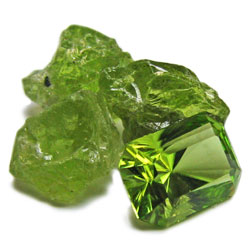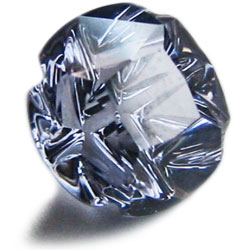
August

Peridot
The color in most gemstones is caused by different trace elements within a common mineral. For example the mineral beryl can be aqua blue (aquamarine), green (emerald), yellow or brownish yellow (golden beryl), or pink or light orange-red (morganite). Peridot, however, is one of the few gemstones whose color comes from the composition of the mineral itself, in this case olivine, and not from trace elements. Therefore, unlike sapphires comprised of corundum, the mineral olivine is only green in color. The shade may vary from yellowish-green to olive to brownish-green, however, depending on how much iron is present.
Peridot has been used for jewelry for thousands of years, dating back as far as the second millennium B.C. and ancient Egyptians called peridot the “gem of the sun”, believing it protected its wearer from terrors of the night. This lovely green gem has also been known as “the Evening Emerald” because its sparkling color looks brilliant any time of day or night. Said to possess healing properties that protect against nightmares and evil, peridot is believed to ensure peace and happiness. In Hawaii peridot symbolizes the tears of Pele, the volcano goddess of fire who controls the flow of lava.
Other August Birthstones


Print